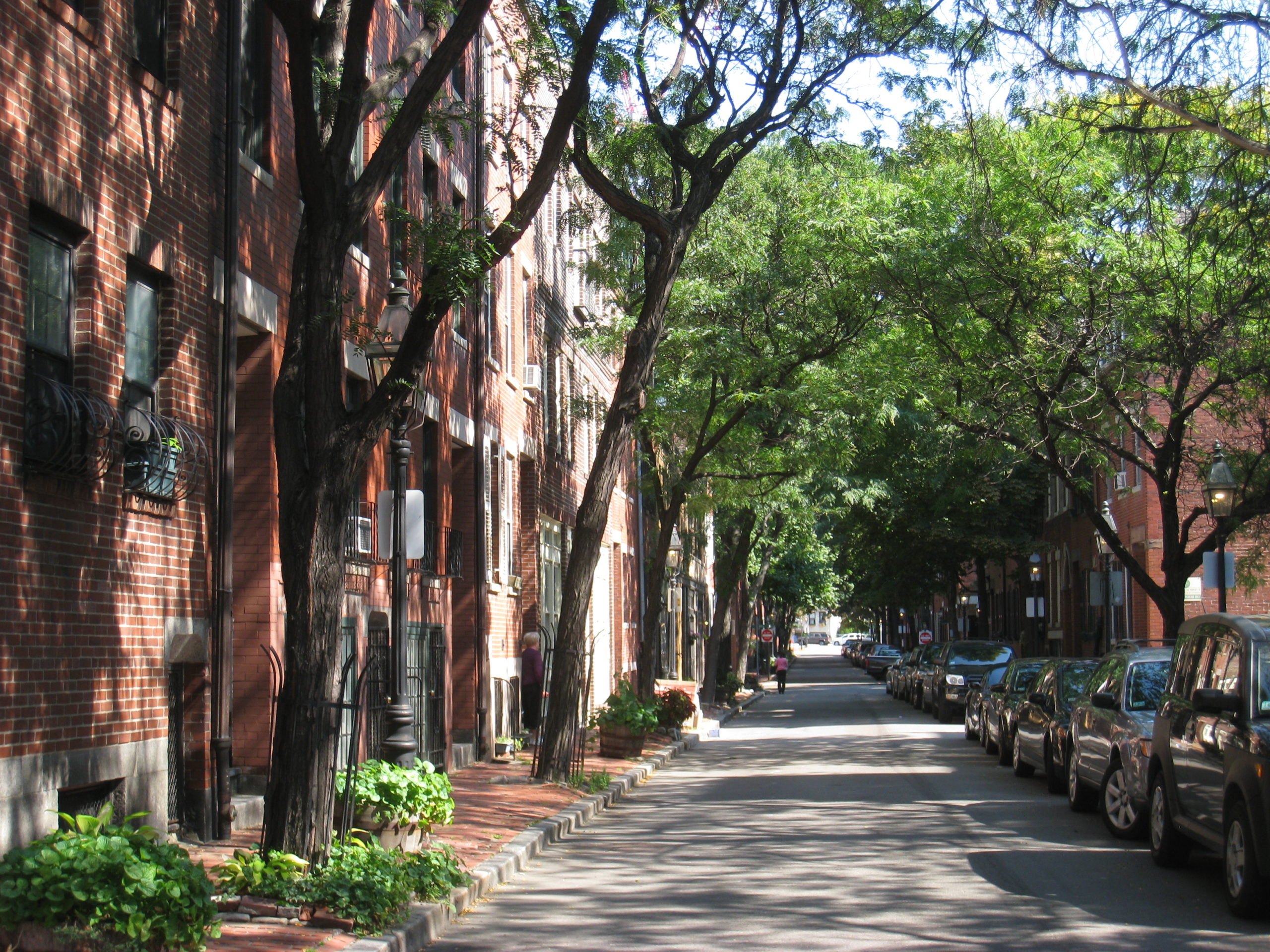Street trees are Boston’s secret weapon in the fight against rising temperatures
The city of Boston in the United States has been planting new street trees to improve the city’s green canopy and battle against climate change. But they also need to fight to keep the trees alive in the middle of drought, car accidents and eager bikers.
U
rban forests are a powerful weapon in the fight against climate change. They cool cities down during heat waves, prevent flooding by absorbing stormwater, clean the air, and reduce noise pollution. In addition, studies show that places with plenty of trees have lower crime rates and less traffic accidents, and that trees can even improve academic performance and boost overall wellbeing.
However, in many cities, brick and concrete gain terrain from leafy areas and funding for city trees is declining. Is there a way to turn this current around?

Trees in Boston and other cities do more than provide shade. Photo courtesy: Wikimedia/Daderot
Boston takes on the challenge
Boston has taken the bull by its horns and launched an initiative to plan more street trees. East Boston has the lowest tree canopy in the whole city, which makes it most vulnerable to the effects of heat waves in the summer.
“Trees are often viewed as window dressing. But in reality, they’re this really fundamental infrastructure that has life or death consequences, especially as our cities are heating up more and more,” said Ian Leahy to Wbur. Leahy is the vice president of urban forestry at a non-profit called American Forests.
Tree canopy has a significant effect on cooling the city down during the heat waves, which are more and more frequent due to climate change. Urban heat kills 600 people every year in America and the figure is rising.
Young trees at risk
As promising as planting new trees can sound, there are many threats to young saplings as they grow.
“It’s tough to be a baby street tree because your roots are really little. And the summers in Boston are quite hot, so drought alone can kill them,” Andrew Trlica, an urban biogeochemistry doctorate from Boston University, told Wbur.
Especially sidewalks are dangerous places for young trees. They can get run over by cars – or snowplows in the wintertime – and even locking bikes to them can be damaging.
For these reasons, taking care of the older, leafier trees is at least as important as planting new ones. Older trees are also bigger and leafier, which means they offer better protection against the burning sun. That is what really helps improve the leaf canopy.
Sacramento shows the way
Fortunately, Boston is not alone in its mission to plant more trees. “We’re having a moment in our field right now, a sudden awakening,” said American Forests’ Ian Leahy to Thomson Reuters Foundation. Last year, Republican lawmakers proposed the legislation setting a goal for the United States to plant a trillion trees by 2050 to fight global warming. According to the National Tree Benefit Calculator, a single 36-inch diameter (91-cm) willow oak can provide nearly $330m in benefits per year.
And many American cities already have success stories to tell. For example Sacramento, one of the leafiest cities of the continent, has distributed and planted 600,000 trees since 1990. The temperature under the city’s canopy can be 20 degrees Fahrenheit (11 degrees Celsius) cooler than areas with no shade, which reduces the need for air conditioning. This translates into a drop in energy consumption and carbon emissions.
Are forest credits the next big thing?
One way to turn the trend around could be to knock on private investors’ doors. A Seattle-based non-profit, City Forest Credits, explores this opportunity. Before Covid-19 took hold, City Forest Credits noticed that more companies are interested in offsetting their carbon emissions whereas at the same time cities are looking for funding for their urban forest projects. The non-profit sector can answer this rising demand. City Forest Credits supervises urban forest projects which companies and organizations can fund as an exchange for forest credits. Then companies use the credits to offset their own carbon emissions, for instance in pursuit of carbon-neutral pledges.
The ideas presented in this article aim to inspire adaptation action – they are the views of the author and do not necessarily reflect those of the Global Center on Adaptation.